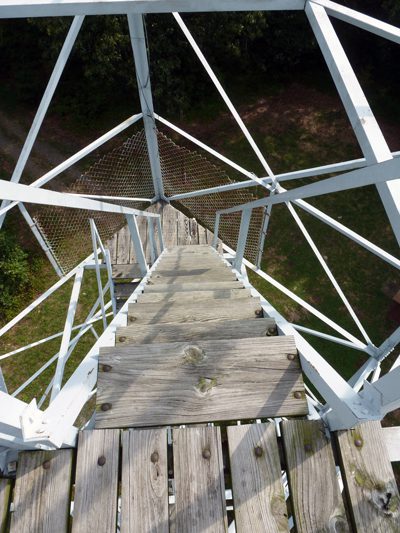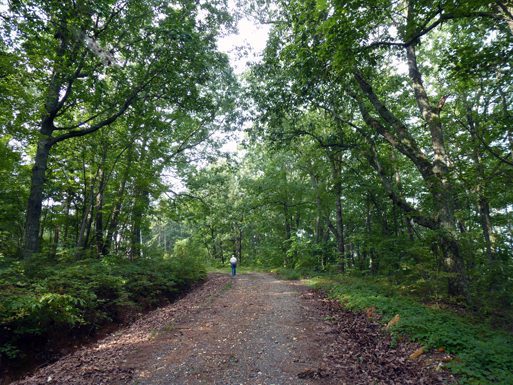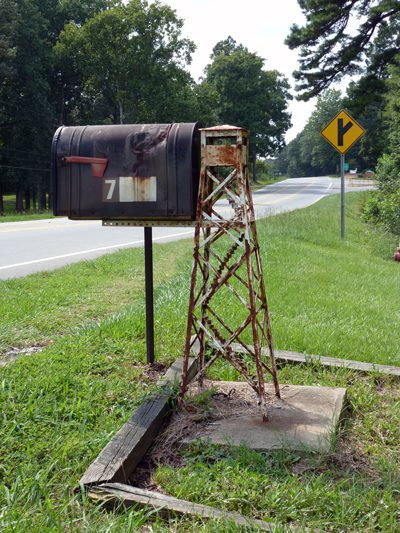Fire towers: History with a view
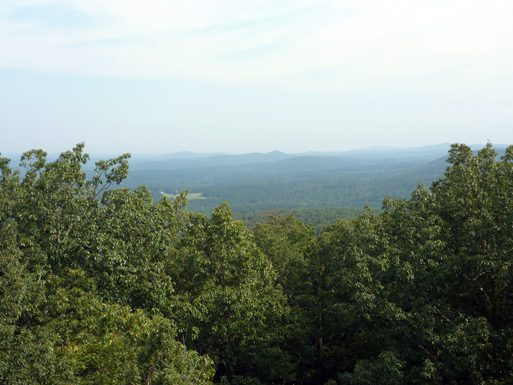
In the Western United States, fire season generally runs from April to September. This year has seen historic fires. The largest wildfire on record in New Mexico started in the Gila National Forest in May, eventually growing to nearly 300,000 acres. A record heat wave in June helped spur the Waldo Canyon fire, Colorado’s most destructive. In the Uwharries, we’re just now entering our most active season, but as the February fire in the Birkhead Wilderness Area suggests, this threat can strike any time of year.
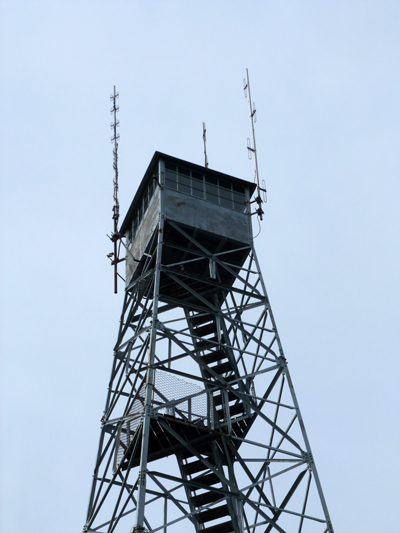 The U.S. Forest Service (USFS) was baptized by fire. The agency was created in 1905 during Theodore Roosevelt’s administration, angering timber magnates and members of Congress beholden to their campaign donations. The fledgling agency’s first leader, Gifford Pinchot, had studied forestry in France and helped establish the Yale School of Forestry. (He also wrote the forest management plan for the Vanderbilt estate, much of which is now part of the Pisgah National Forest in Western North Carolina.) Pinchot believed forests could, and should, be managed. This included fire. In August 1910, a freak windstorm whipped up wildfires smoldering in the drought-stricken forests of Washington, Idaho and Montana. Pinchot saw an opportunity for the agency to prove itself. He directed his rangers to contain the conflagrations that eventually killed 85 firefighters and destroyed more than 7 billion board feet of timber. Despite inadequate funding, training and manpower, their performance earned the agency a grudging respect and helped insure its viability. Timothy Egan chronicled this story in The Big Burn.
The U.S. Forest Service (USFS) was baptized by fire. The agency was created in 1905 during Theodore Roosevelt’s administration, angering timber magnates and members of Congress beholden to their campaign donations. The fledgling agency’s first leader, Gifford Pinchot, had studied forestry in France and helped establish the Yale School of Forestry. (He also wrote the forest management plan for the Vanderbilt estate, much of which is now part of the Pisgah National Forest in Western North Carolina.) Pinchot believed forests could, and should, be managed. This included fire. In August 1910, a freak windstorm whipped up wildfires smoldering in the drought-stricken forests of Washington, Idaho and Montana. Pinchot saw an opportunity for the agency to prove itself. He directed his rangers to contain the conflagrations that eventually killed 85 firefighters and destroyed more than 7 billion board feet of timber. Despite inadequate funding, training and manpower, their performance earned the agency a grudging respect and helped insure its viability. Timothy Egan chronicled this story in The Big Burn.
The USFS geared up to fight fires. Its goal was to put out a blaze as soon as it started. Fire towers were built to aid in active surveillance. In his book, Fire Season, Philip Connors describes the months he spends in a 7-foot-by-7-foot tower on a 10,000-foot mountain in New Mexico’s Gila Wilderness Area. A former editor at the Wall Street Journal, he describes the life of a lookout as “a blend of monotony, geometry and poetry, with healthy dollops of frivolity and sloth.” In addition to being an account of his daily activities, the book also includes literary diversions and a discussion of the changing philosophy of fighting fire on our public lands. Since the policy of zero-tolerance fire suppression might be partially responsible for the conflagrations we see today, the USFS is beginning to rethink its strategy, letting some fires burn and even using controlled burns to decrease fuel load.
Connors acknowledges he’s in the waning days of this profession – satellites are replacing human surveillance. In the Uwharries, we don’t rely on fire towers as much as we did in the past. At one time, the USFS had two fire towers in the Uwharries. A pole tower was built on private land atop King Mountain in Eleazer. By 1941, this tower was deemed unsafe and impractical to repair, so the USFS bought 4.9 acres from the Auman family to construct a permanent tower on the site. Retired ranger Jessie Sanders recalls the tower being torn down in the early 1960s. The USFS still owns this postage-stamp parcel, and when I was up there last, the concrete footings were still intact. The LandTrust for Central North Carolina has protected the surrounding tract to provide a corridor for extending the Uwharrie Trail.
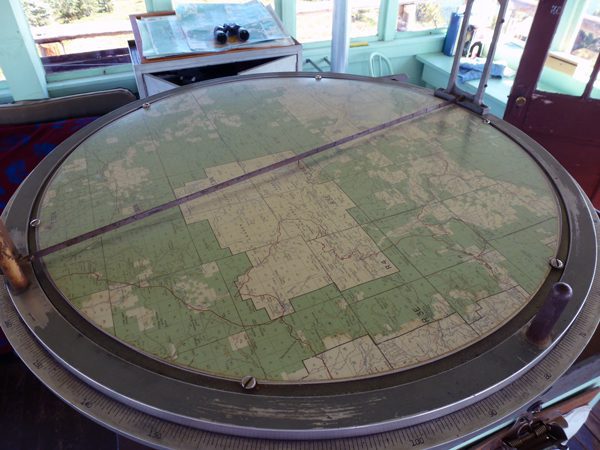 The Buck Mountain tower rises from its 830-foot namesake in the community of Uwharrie. This metal structure dates to 1936 and was likely built by the Civilian Conservation Corps. The base of its 7-foot-by-7-foot cab is 94 feet from the ground. I climbed the tower recently (with a ranger’s permission). Halfway up, I glanced at my feet on the narrow treads got a little woozy. I steeled myself with memories of racing up and down those steps when I was a girl. We liked to climb the tower on autumn afternoons for a bird’s-eye view of our forests painted in yellow, orange, purple and red. Now the base of the tower is surrounded by a chain-link fence, and a locked gate deters the casual visitor.
The Buck Mountain tower rises from its 830-foot namesake in the community of Uwharrie. This metal structure dates to 1936 and was likely built by the Civilian Conservation Corps. The base of its 7-foot-by-7-foot cab is 94 feet from the ground. I climbed the tower recently (with a ranger’s permission). Halfway up, I glanced at my feet on the narrow treads got a little woozy. I steeled myself with memories of racing up and down those steps when I was a girl. We liked to climb the tower on autumn afternoons for a bird’s-eye view of our forests painted in yellow, orange, purple and red. Now the base of the tower is surrounded by a chain-link fence, and a locked gate deters the casual visitor.
Years ago, Jessie Sanders sometimes logged 14-hour shifts, seven days per week, in the Buck Mountain tower. (He and his fellow spotters also liked the bonus pay that came with fighting fires on the ground.) The tower used to be staffed consistently during dry weather, but now, with limited resources, Sanders or another ranger is dispatched to monitor our forests only during extreme conditions. It’s primarily used for locating fires after the USFS receives a smoke report. Sanders notes they receive more calls these days because so many people have cell phones. This mobile technology has replaced the tower’s old radio system, but its Osborne Fire Finder – a simple device developed almost a century ago – is still in operation.
A recently completed USFS study determined the Buck Mountain tower is eligible for the National Register of Historic Places. Many fire towers have been removed, so the ones that remain have a special significance. The Buck Mountain tower helps rangers protect our forests, but it also stands as a reminder of how our nation’s history has been shaped by fire.
Scroll below for more photos from the Buck Mountain fire tower.
This article wouldn’t have been possible without the generous assistance of current and former rangers with the Uwharrie National Forest: Kelly Cagle, Joel Hardison, Tom Horner, Miranda Porcenaluk, Jessie Sanders, Melissa Sanders and Deborah Walker.
In addition to the books mentioned above, I’d also recommend Young Men and Fire, Norman MacLean’s haunting quest for answers about a tragic incident during Montana’s Mann Gulch fire in 1949, which led to the deaths of 13 smokejumpers, including one from Charlotte.
